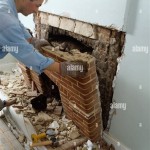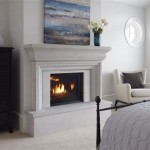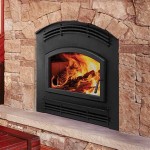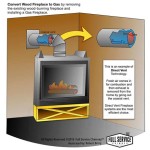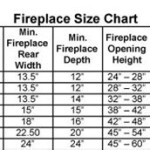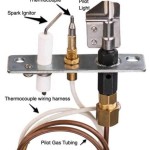Screened In Porch With Fireplace: Understanding the Cost Factors
A screened-in porch with a fireplace represents a significant home improvement project, offering an enhanced outdoor living space that can be enjoyed for a large portion of the year. The addition of a screened-in porch provides protection from insects and the elements, while a fireplace extends the usability of the space into cooler months. However, the cost of such a project can vary considerably depending on numerous factors. This article will explore those factors in detail, providing a comprehensive overview of the potential expenses involved in building a screened-in porch with a fireplace.
The primary components contributing to the overall cost include the size of the porch, the materials used in construction, the type of fireplace installed, labor costs, and any necessary permits or inspections. Furthermore, geographical location can significantly influence material and labor prices. Careful planning and a thorough understanding of these cost drivers are essential for developing a realistic budget and avoiding unexpected expenses during the construction process.
Key Cost Factors: Porch Size and Materials
The size of the screened-in porch directly correlates with the amount of materials required, and consequently, the overall cost of the project. A larger porch naturally demands more lumber, screening, roofing materials, and foundation work. The cost increases are generally linear, meaning a porch twice the size will roughly double the material expenses. Determining the desired dimensions of the porch early in the planning stages is crucial for accurate cost estimation.
Material selection represents another significant cost driver. Common framing materials include pressure-treated lumber, cedar, and composite materials. Pressure-treated lumber is generally the most affordable option, offering durability and resistance to decay and insects. Cedar, known for its aesthetic appeal and natural resistance to insects, tends to be more expensive. Composite materials, offering low maintenance and long lifespan, often command the highest price point. The choice of framing material should consider both budget and aesthetic preferences.
Screening materials also contribute to the overall expense. Options range from traditional aluminum or fiberglass screening to more durable and specialized screens designed for pet resistance or enhanced visibility. The cost of screening varies based on the material's durability, mesh size, and overall quality. Opting for higher-quality screening can increase the initial cost but may result in long-term savings due to reduced maintenance and replacement needs.
Roofing materials represent a substantial portion of the porch construction cost. The choice of roofing material should complement the existing house and provide adequate protection from the elements. Common options include asphalt shingles, metal roofing, and wood shakes. Asphalt shingles are typically the most cost-effective option, while metal roofing offers superior durability and longevity, albeit at a higher price. Wood shakes provide a rustic aesthetic but require regular maintenance to prevent decay and insect infestation.
Foundation work is essential for ensuring the stability and longevity of the screened-in porch. The type of foundation required will depend on local building codes and the soil conditions at the building site. Common foundation options include concrete slabs, pier and beam foundations, and crawl spaces. Concrete slabs are generally the most affordable option for relatively small porches, while pier and beam foundations are suitable for uneven terrain or areas prone to flooding. Crawl spaces provide access to utilities and can improve ventilation, but they also increase construction costs.
Key Cost Factors: Fireplace Type and Installation
The fireplace is a defining feature of the screened-in porch and a major contributor to the overall project cost. The type of fireplace chosen will significantly impact the material and installation expenses. Options include wood-burning fireplaces, gas fireplaces, and electric fireplaces. Each type offers unique advantages and disadvantages in terms of cost, aesthetics, and functionality.
Wood-burning fireplaces are often the most traditional and aesthetically pleasing option, providing the ambiance and crackling sounds that many homeowners desire. However, they also require a chimney or flue for proper ventilation, which can significantly increase the installation cost. Furthermore, wood-burning fireplaces require a readily available source of firewood and regular cleaning to remove ash and creosote buildup. Building codes related to wood-burning fireplaces may also restrict their installation in some areas.
Gas fireplaces offer a convenient and efficient alternative to wood-burning fireplaces. They can be easily turned on and off with the flip of a switch and provide consistent heat output. Gas fireplaces require a gas line connection, which may involve additional plumbing costs. Venting options for gas fireplaces vary, with direct-vent models being the most efficient and requiring minimal chimney work. Vent-free gas fireplaces are also available, but their use may be restricted by local building codes due to concerns about indoor air quality.
Electric fireplaces represent the simplest and most affordable fireplace option. They do not require a chimney or gas line and can be easily installed by plugging them into a standard electrical outlet. Electric fireplaces provide supplemental heat and can simulate the appearance of a real fire, often with adjustable flame settings. However, they typically do not provide the same level of ambiance and heat output as wood-burning or gas fireplaces. Consider the electrical capacity of the porch to handle the load of an electric fireplace without overloading the circuit.
Beyond the fireplace itself, installation costs encompass several factors. These include the cost of the vent or chimney installation (if applicable), the gas line connection (for gas fireplaces), any necessary framing or masonry work to support the fireplace, and the labor costs for a qualified contractor. Complex installations, such as those involving custom stonework or intricate venting systems, will naturally increase the overall expense.
Key Cost Factors: Labor, Permits, and Other Considerations
Labor costs represent a substantial portion of the screened-in porch with fireplace project. The cost of labor will vary depending on the location, the experience and qualifications of the contractors, and the complexity of the project. It is advisable to obtain multiple quotes from reputable contractors and carefully review their proposals to ensure that they include all necessary work and materials. A reputable contractor will be licensed, insured, and have a proven track record of successful porch construction projects.
Permits and inspections are essential for ensuring that the screened-in porch with fireplace meets all applicable building codes and safety regulations. The cost of permits will vary depending on the local jurisdiction and the scope of the project. It is important to obtain all necessary permits before starting construction to avoid potential fines or delays. Inspection costs are typically included as part of the permit process, ensuring that the work is performed according to code.
Additional considerations that can impact the overall cost of the project include site preparation, electrical work, and landscaping. Site preparation may involve clearing vegetation, grading the land, and removing any obstacles that could interfere with construction. Electrical work may be required to provide lighting, outlets, and power for the fireplace. Landscaping can enhance the aesthetic appeal of the porch and provide privacy. Consider these additional costs when developing the project budget.
Unexpected expenses can arise during any construction project. To mitigate this risk, it is advisable to set aside a contingency fund to cover unforeseen issues, such as hidden structural problems or unexpected material price increases. A contingency fund of 10% to 15% of the total project cost is generally recommended. This buffer can help to avoid financial strain and ensure that the project can be completed without compromising on quality.
The location of the project can also significantly impact the cost. Areas with high demand for construction services or limited access to materials may experience higher prices. Seasonal variations can also affect costs, as some contractors may charge more during peak seasons. Researching local market conditions and planning the project during off-peak seasons can potentially reduce overall expenses. Understanding local building codes and regulations is also crucial for ensuring that the project complies with all requirements.
Choosing the right contractor is paramount for a successful and cost-effective screened-in porch with fireplace project. Look for contractors with extensive experience in porch construction and a strong portfolio of completed projects. Check online reviews and ask for references to assess the contractor's reputation and reliability. Clearly communicate the project vision and budget to the contractor and ensure that all details are documented in a written contract. A well-defined contract will protect both the homeowner and the contractor and minimize the risk of misunderstandings or disputes.
Long-term maintenance costs should also be factored into the overall budget. Screened-in porches require regular cleaning and maintenance to prevent damage from the elements. Fireplaces require regular cleaning and inspection to ensure safe and efficient operation. Performing routine maintenance tasks can help to extend the lifespan of the porch and fireplace and prevent costly repairs in the future. Consider the long-term cost of ownership when making material and design choices.
Finally, consider the return on investment (ROI) of the screened-in porch with fireplace. While the primary goal may be to enhance personal enjoyment, adding a desirable outdoor living space can also increase the value of the home. A well-designed and constructed screened-in porch with fireplace can be a significant selling point, attracting potential buyers and potentially increasing the home's market value. Consider consulting with a real estate professional to assess the potential impact of the porch on the home's value.

How Much Does It Cost To Build A Fireplace In Screened Porch

Screened In Porch Cost Guide By Material Size And More Forbes Home

What S My Dream Screen Porch Going To Cost

How Much Does A Screened In Porch Or Patio Cost 2024

Screened In Porches How Much Do They Cost To Build Between Naps On The Porch
.jpg?strip=all)
What Are The Costs Of Using An Outdoor Fireplace In Maryland

The Outdoor Great Room In East Cobb Greathouse Atlanta

How Much Does A Screened In Porch Or Patio Cost 2024

Does A Screened In Porch Add Value How And Why

How Much Does A Screened In Porch Cost 2024 Data

